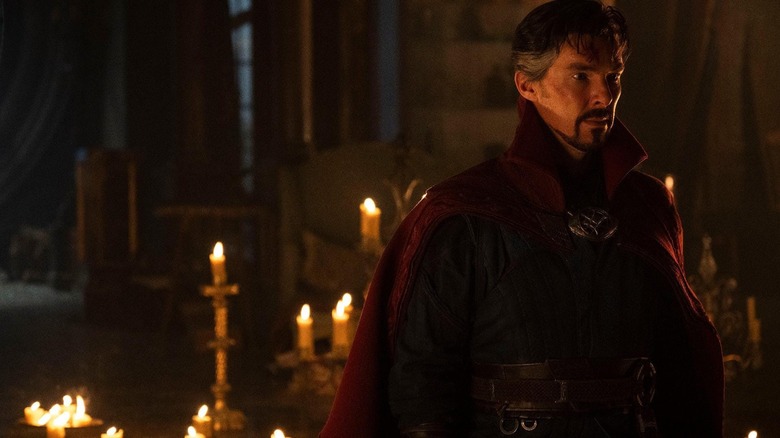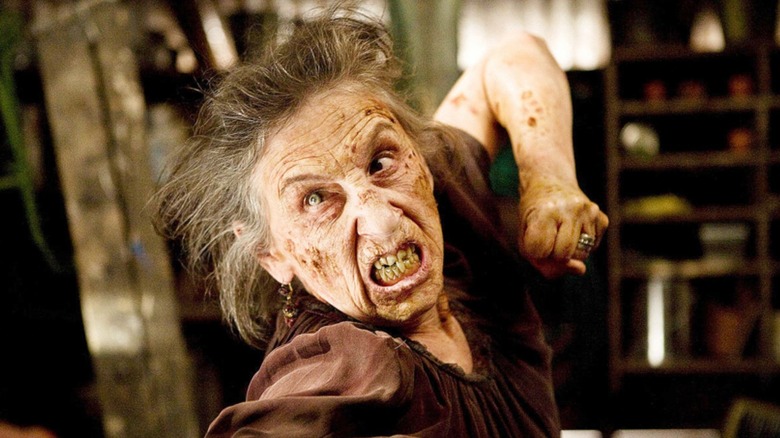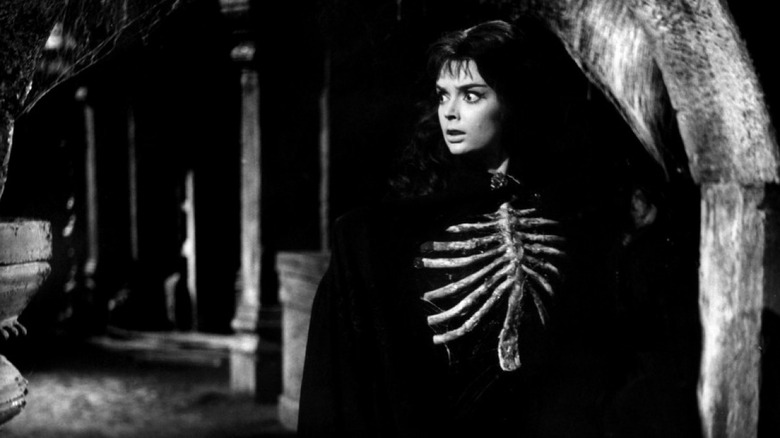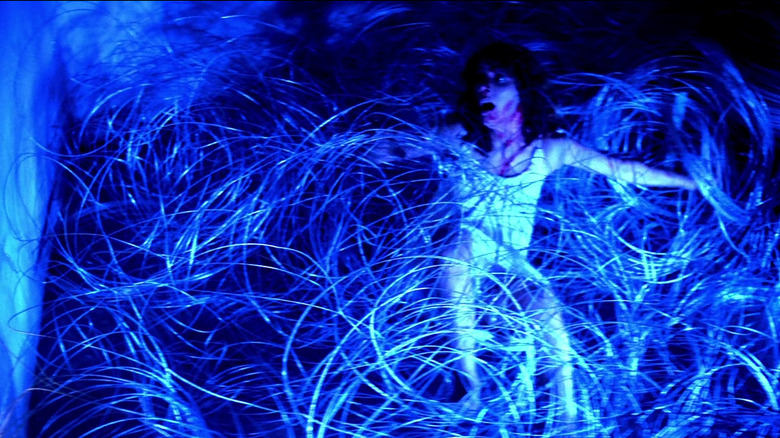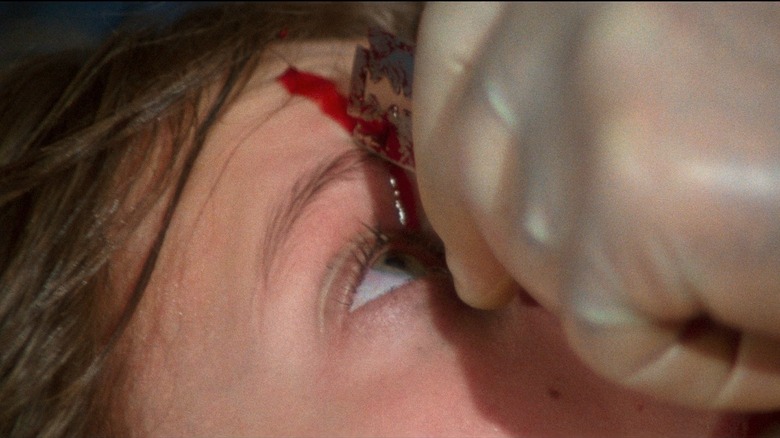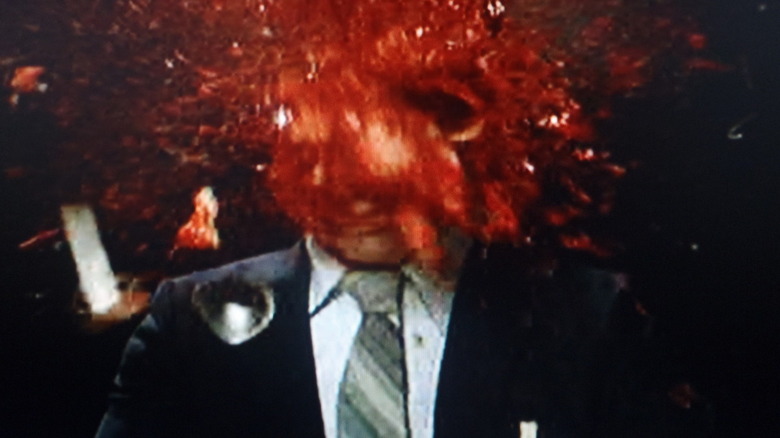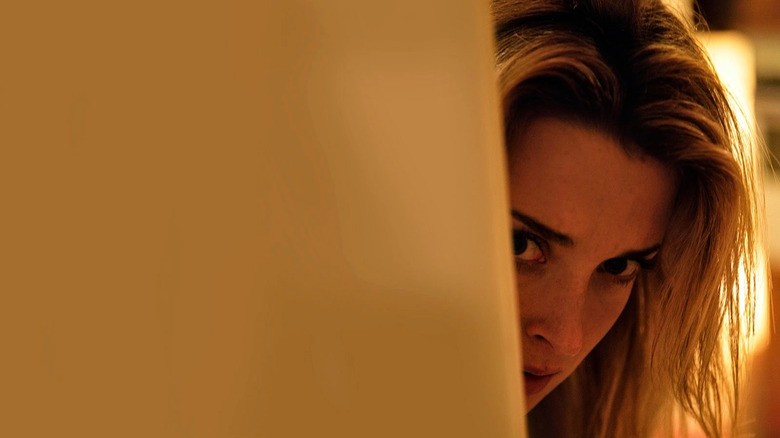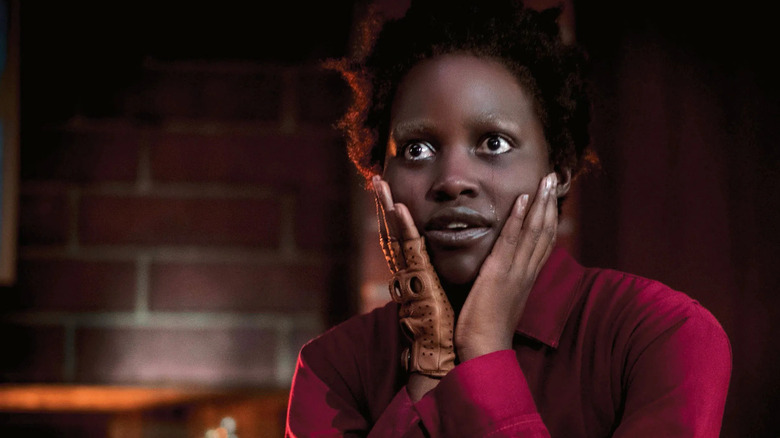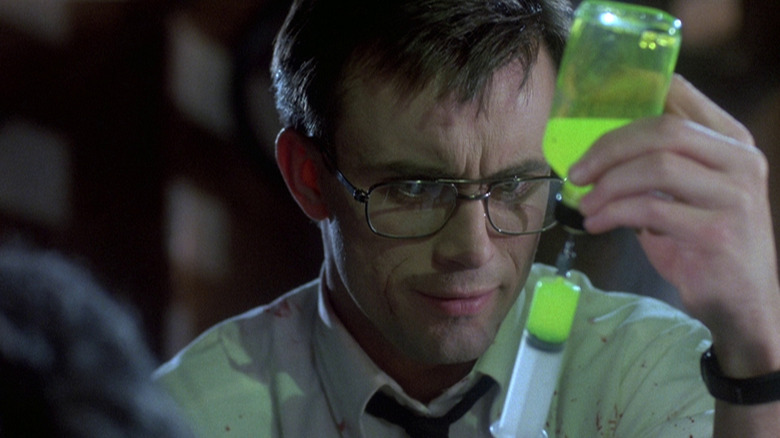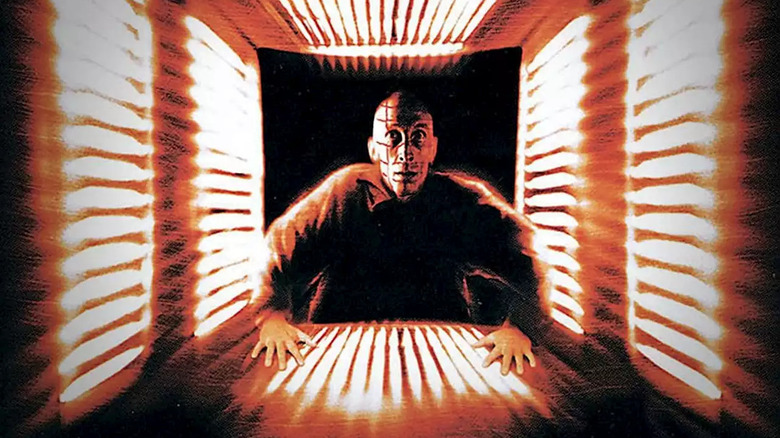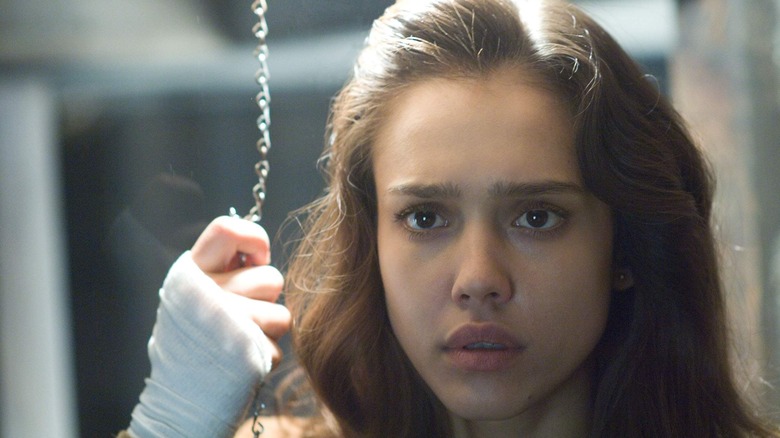10 Horror Movies To Watch After Doctor Strange In The Multiverse Of Madness
This post contains major spoilers.
So you've just watched "Doctor Strange in the Multiverse of Madness" and found yourself won-over by its overt horror slant. You can mostly thank director Sam Raimi for that, as he's been one of the genre's eminent filmmakers ever since he burst onto the scene with his breakout feature "The Evil Dead" in 1981. Like any genre-obsessed director worth their salt, Raimi stuffed his "Doctor Strange" sequel with a ton of callbacks to some of horror's gnarliest kills and thrills. While the film is far from the best Marvel Studios has churned out in its 28-film run (honestly, it's not even the best multiverse movie currently out in theaters), it is certainly the most horror-oriented.
Let's celebrate Raimi's horror-helming hand and delve into some of the influences behind the latest Marvel flick. If you liked the new "Doctor Strange" movie, you simply have to check these classics out.
Drag Me to Hell
Sure, we could have put any Sam Raimi horror movie on this list — "The Evil Dead," "Army of Darkness," "The Gift" — but the woman-oriented witchcraft of "Drag Me to Hell" feels particularly close to the story of the "Doctor Strange" sequel. Wanda Maximoff, aka the Scarlet Witch (Elizabeth Olsen), channels Sylvia Ganush (Lorna Raver), the evil witch in "Drag Me to Hell" whose sole intention is to condemn the soul of Christine Brown (Alison Lohman) to hell when she's refused a mortgage extension. As such, she traverses the dimension of life and death to seal Christine's fate in hell. Similarly, Wanda pursues America Chavez (Xochitl Gomez) with dogged supernatural intention, wishing to strip her of her dimension-hopping powers by killing her.
Black Sunday
The film all subsequent witch movies have been derived from, Italian director Mario Bava's 1960 gothic horror film "Black Sunday" is an essential watch if you liked the "Doctor Strange" sequel. It features vengeful witches, undead doppelgängers, and seemingly star-crossed lovers who find love in the face of unfathomable evil. There's also a familial element to "Black Sunday," though it's admittedly much more twisted and sexually charged than Wanda's pursuit of a life with her twin sons. Either way, it's a classic that effectively breathed life into the concept of modern-day horror witches — horror history at its finest and most visually sumptuous.
Suspiria (1977)
For another Italian take on witches that feels much more playful, Dario Argento's 1977 color-drenched giallo "Suspiria" makes a great companion to the new Marvel movie. The kills are bloody yet often feature a sense of humor that rivals Sam Raimi's — comically large glass shards, an unexplainable sea of barbed wire — and the witch got a pseudo-nod during one of Wanda's many murders. In typical giallo style, the witch's hands are the only part of her that is ever seen. When Wanda emerges from a red cloud and snaps Dr. X's neck with withered, horrifying hands, it's easy to see where Raimi mined the visual cue from. For a fearsome witch that moves just as erratically and sneakily as Wanda does, "Suspiria" totally delivers (and hey, the 2018 Luca Guadagnino remake isn't half-bad, either).
The New York Ripper
Speaking of specific kills in "Doctor Strange 2," the first one that really makes the audience go "eww" is the giant, one-eyed octopus demon who gets its eye ripped out by a street post. If you've now developed a twisted fascination for eye-gouging kills, look no further than any Lucio Fulci film. Another Italian genre icon, Fulci is renowned for including gory eye details in all his films, and "The New York Ripper" is certainly no exception. Featuring a moment where a beautiful young woman's eye meets a razor blade, it's an anguishing, slow watch. While Fulci's ocular fixation runs a wide gamut, "The New York Ripper" has the distinction of being set in the then-sleazy city that never sleeps, paralleling Doctor Strange's constant defense of the Big Apple.
Scanners
Another one of the film's most insane kills features Wanda sealing Black Bolt's mouth shut, causing him to scream and explode his own head with his booming, destructive voice. Of course, body horror auteur David Cronenberg gave us the head explosion for the ages in his 1981 telepathic horror film "Scanners." I won't spoil the circumstances of the literally mind-blowing moment, but the effect was executed in part through the use of "latex scraps, some wax, and just bits and bobs and a lot of stringy stuff that we figured would fly through the air a little better" in addition to "leftover burgers." Seriously, it's one of the greatest practical effect achievements in horror history.
Coherence
As far as the multidimensional approach of the "Doctor Strange" sequel, the 2013 horror-thriller "Coherence" managed to distill the terror of the cosmic possibility on a comparatively shoestring budget. When an already disastrous dinner party turns deadly after the passing of Miller's comet, an alternate house with doppelgängers of each dinner guest appears. Using the theory of quantum decoherence, the film grapples with scientific concepts while also delving into universal absurdity. It's a thrillingly original watch, an option that might be refreshing for those who found themselves underwhelmed by the uninspired proliferation of the Marvel machine.
Us
If you like your doppelgänger films with an undercurrent of sociopolitical commentary, Jordan Peele's "Us" is exactly what you're searching for. For those unfamiliar with the horror hit from one of the genre's current reigning directors, "Us" follows a woman named Adelaide (Lupita Nyong'o) and her family as they embark on a seaside vacation. When an identical family wearing red jumpsuits and armed with scissors show up on their doorstep, a fight for their lives — and their identities — begins. The plot of "Us" also evokes Wanda's attempt to steal her children from a version of her in an alternate dimension, a single mother who raises her twin boys with gentle adoration. For Wanda, she's simply taking back what she feels was unduly taken for her. For her alternate reality double, however, Scarlet Witch is wreaking havoc on her body, mind, and precious family.
Re-Animator
For those who absolutely loved Doctor Strange's ability to "dreamwalk" using a corpse of himself from an alternate dimension, Stuart Gordon's "Re-Animator" took the concept to new horror heights. When a medical student begins experimenting with a revitalizing serum on cadavers, he effectively plays God by bringing people back to life, beginning with his dead professor. The "zombies" in the film are uncannily strong and recklessly violent, putting a spin on the genre trope that usually portrays the undead as slow-moving frail corpses hungry for brains. While Strange's revived corpse definitely gives off a vibe of Billy Budd from "Hocus Pocus," Sam Raimi was certainly playing with the strength and vitality of the "Re-Animator" ghouls, especially when considering Strange's ultimate victory.
Cube
When it comes to navigating a totally unfamiliar space (and cutting people up in the process), nothing takes the cake like Vincenzo Natali's 1997 horror film "Cube." While it doesn't feature alternate dimensions or supernatural entities, "Cube" is still creepy for a lot of the same reasons the "Doctor Strange" sequel is. Particularly when it comes to a certain character getting bisected by their own shield, Cube conjures similar imagery of bodies getting sliced and diced. Five strangers awake in a strange, cube-shaped room that is surrounded by other variously booby-trapped cube-shaped rooms. As the group attempts to escape their prison, they are gradually picked off — and the reason for their capture is finally revealed. Seriously, if the gory elements in "Doctor Strange 2" enticed you at all, "Cube" is a crazy psychological thriller that isn't unyieldingly stomach-churning.
The Eye (2008)
The Jessica Alba vehicle "The Eye" — a remake of a Hong Kong-Singaporean movie of the same name — is by no means a "good" horror movie. But for those of us who grew up fostering our first fears in the late aughts, it certainly feels like a touchstone of sorts. When a blind woman named Sydney (Alba) undergoes a corneal transplant that finally grants her vision, she begins to see terrifying visions of people dying. If anything, Strange's spontaneous acquisition of a third eye during the film's conclusion is really the only thing connecting the two films. But hey, as we've already covered with Lucio Fulci and "The New York Ripper," even the most middling of eye-based horror is enough to cause audiences to squirm. And for that, we must thank Sam Raimi for imbuing "Doctor Strange in the Multiverse of Madness" with the most distinct horror streak the MCU has ever — and probably will ever — see.
